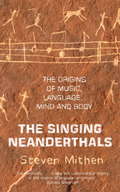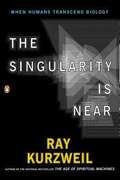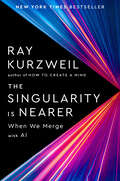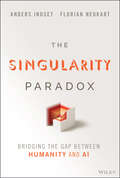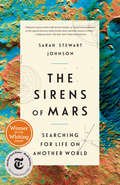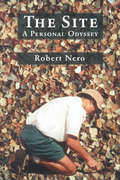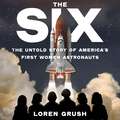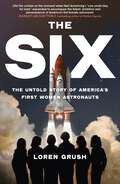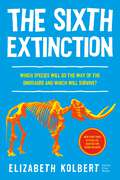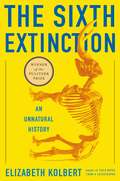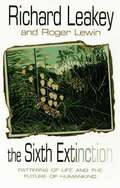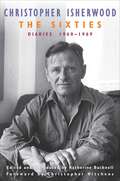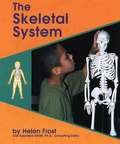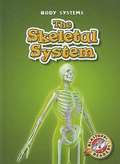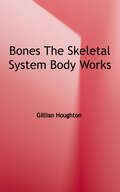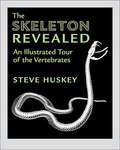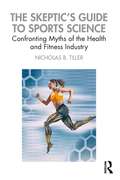- Table View
- List View
The Singing Neanderthals: The Origins of Music, Language, Mind and Body
by Steven MithenA fascinating and incisive examination of our language instinct from award-winning science writer Steven Mithen.Along with the concepts of consciousness and intelligence, our capacity for language sits right at the core of what makes us human. But while the evolutionary origins of language have provoked speculation and impassioned debate, music has been neglected if not ignored. Like language it is a universal feature of human culture, one that is a permanent fixture in our daily lives.In THE SINGING NEANDERTHALS, Steven Mithen redresses the balance, drawing on a huge range of sources, from neurological case studies through child psychology and the communication systems of non-human primates to the latest paleoarchaeological evidence.The result is a fascinating and provocative work and a succinct riposte to those, like Steven Pinker, who have dismissed music as a functionless and unimportant evolutionary byproduct.
The Singular Universe and the Reality of Time
by Roberto Mangabeira Unger Lee SmolinCosmology is in crisis. The more we discover, the more puzzling the universe appears to be. How and why are the laws of nature what they are? A philosopher and a physicist, world-renowned for their radical ideas in their fields, argue for a revolution. To keep cosmology scientific, we must replace the old view in which the universe is governed by immutable laws by a new one in which laws evolve. Then we can hope to explain them. The revolution that Roberto Mangabeira Unger and Lee Smolin propose relies on three central ideas. There is only one universe at a time. Time is real: everything in the structure and regularities of nature changes sooner or later. Mathematics, which has trouble with time, is not the oracle of nature and the prophet of science; it is simply a tool with great power and immense limitations. The argument is readily accessible to non-scientists as well as to the physicists and cosmologists whom it challenges.
The Singularity Is Near
by Ray KurzweilFor over three decades, Ray Kurzweil has been one of the most respected and provocative advocates of the role of technology in our future. In his classic The Age of Spiritual Machines, he argued that computers would soon rival the full range of human intelligence at its best. Now he examines the next step in this inexorable evolutionary process: the union of human and machine, in which the knowledge and skills embedded in our brains will be combined with the vastly greater capacity, speed, and knowledge-sharing ability of our creations.
The Singularity Is Nearer: When We Merge with AI
by Ray KurzweilAN INSTANT NEW YORK TIMES BESTSELLERONE OF TIME&’S 100 MOST INFLUENTUAL PEOPLE IN ARTIFICIAL INTELLIGENCEThe noted inventor and futurist&’s successor to his landmark book The Singularity Is Near explores how technology will transform the human race in the decades to comeSince it was first published in 2005, Ray Kurzweil&’s The Singularity Is Near and its vision of an exponential future have spawned a worldwide movement. Kurzweil's predictions about technological advancements have largely come true, with concepts like AI, intelligent machines, and biotechnology now widely familiar to the public.In this entirely new book Ray Kurzweil brings a fresh perspective to advances toward the Singularity—assessing his 1999 prediction that AI will reach human level intelligence by 2029 and examining the exponential growth of technology—that, in the near future, will expand human intelligence a millionfold and change human life forever. Among the topics he discusses are rebuilding the world, atom by atom with devices like nanobots; radical life extension beyond the current age limit of 120; reinventing intelligence by connecting our brains to the cloud; how exponential technologies are propelling innovation forward in all industries and improving all aspects of our well-being such as declining poverty and violence; and the growth of renewable energy and 3-D printing. He also considers the potential perils of biotechnology, nanotechnology, and artificial intelligence, including such topics of current controversy as how AI will impact employment and the safety of autonomous cars, and "After Life" technology, which aims to virtually revive deceased individuals through a combination of their data and DNA.The culmination of six decades of research on artificial intelligence, The Singularity Is Nearer is Ray Kurzweil&’s crowning contribution to the story of this science and the revolution that is to come.
The Singularity Paradox: Bridging the Gap Between Humanity and AI
by Florian Neukart Anders IndsetUnderstand humanity's opportunity to create Artificial Conscious Entities in response to the singularity The Singularity Paradox: Bridging the Gap Between Humanity and AI is a comprehensive exploration of how the fusion of biology, neuroscience, and artificial intelligence can lead to the creation of Artificial Human Intelligence (AHI) as a conscious response to the unconscious development of superintelligence. You will learn about how: Singularity highlights the tension between the boundless possibilities of technological advancement and the potential loss of human autonomy, control, and relevance. AHI may become essential in navigating this singularity and preventing the severe consequences that could arise. The convergence of humanity and technology, shedding light on the ethical, social, and scientific implications of this transformation is taken on with a fresh perspective. Written by Anders Indset and Florian Neukart, The Singularity Paradox is a must-read read for anyone interested in the future of technology, artificial intelligence, neuroscience, and philosophy, as well as humanity's not-so-distant future, where science fiction may become reality.
The Singularity is Near: When Humans Transcend Biology
by Ray KurzweilFor over three decades, Ray Kurzweil has been one of the most respected and provocative advocates of the role of technology in our future. In his classic The Age of Spiritual Machines, he argued that computers would soon rival the full range of human intelligence at its best. Now he examines the next step in this inexorable evolutionary process: the union of human and machine, in which the knowledge and skills embedded in our brains will be combined with the vastly greater capacity, speed, and knowledge-sharing ability of our creations.
The Sirens of Mars: Searching for Life on Another World
by Sarah Stewart Johnson&“Sarah Stewart Johnson interweaves her own coming-of-age story as a planetary scientist with a vivid history of the exploration of Mars in this celebration of human curiosity, passion, and perseverance.&”—Alan Lightman, author of Einstein&’s Dreams Mars was once similar to Earth, but today there are no rivers, no lakes, no oceans. Coated in red dust, the terrain is bewilderingly empty. And yet multiple spacecraft are circling Mars, sweeping over Terra Sabaea, Syrtis Major, the dunes of Elysium, and Mare Sirenum—on the brink, perhaps, of a staggering find, one that would inspire humankind as much as any discovery in the history of modern science. In this beautifully observed, deeply personal book, Georgetown scientist Sarah Stewart Johnson tells the story of how she and other researchers have scoured Mars for signs of life, transforming the planet from a distant point of light into a world of its own. Johnson&’s fascination with Mars began as a child in Kentucky, turning over rocks with her father and looking at planets in the night sky. She now conducts fieldwork in some of Earth&’s most hostile environments, such as the Dry Valleys of Antarctica and the salt flats of Western Australia, developing methods for detecting life on other worlds. Here, with poetic precision, she interlaces her own personal journey—as a female scientist and a mother—with tales of other seekers, from Percival Lowell, who was convinced that a utopian society existed on Mars, to Audouin Dollfus, who tried to carry out astronomical observations from a stratospheric balloon. In the process, she shows how the story of Mars is also a story about Earth: This other world has been our mirror, our foil, a telltale reflection of our own anxieties and yearnings. Empathetic and evocative, The Sirens of Mars offers an unlikely natural history of a place where no human has ever set foot, while providing a vivid portrait of our quest to defy our isolation in the cosmos.
The Sirex Woodwasp and its Fungal Symbiont:
by Bernard Slippers Peter De Groot Michael John WingfieldThe Sirex woodwasp, Sirex noctilio, is the most important invasive alien insect pest of Pinus plantations in the Southern Hemisphere. It now also threatens pines in North America. This book brings together the worldwide knowledge of researchers from Universities and Government institutions, as well as forest industry practitioners that have worked on the pest. Importantly, it is the first comprehensive treatment of the subject since S. noctilio was discovered outside its native range around 1900. The book covers all aspects of the biology and management of S. noctilio, including aspects of the insects' taxonomy, general life history, host-plant relationships, population dynamics, chemical ecology and symbiosis with the fungus Amylostereum areolatum. The book also contains a comprehensive synthesis of the history and current status of the pest and worldwide efforts to control it, including biological control, silviculture and quarantine.
The Site: A Personal Odyssey
by Robert W. NeroPoetry or potsherds? That’s the surprising dilemma one of Canada’s well-known nature writers confronts in The Site: A Personal Odyssey, a highly personalized account of a lifetime’s involvement as an avocational archaeologist. With deft descriptive powers, Robert Nero leads us gently into this new facet of his amazing spectrum of interests. Not unexpectedly, there even is poetry in his approach to studying prehistoric remains! From childhood through adolescence, to wartime service with the U.S. Army in the Southwest Pacific, from exploring the vast sand dunes of Lake Athabasca to excavating a 3,000-year-old site he discovered west of Winnipeg, Nero allows us to share his enthusiasm and excitement in outdoor adventures. There is always a wonderful immediacy in his narrative, the mark of a gifted writer, whether expressed in prose or poetry.
The Six -- Young Readers Edition: The Untold Story of America's First Women Astronauts
by Loren GrushThe extraordinary true story of America&’s first female astronauts hailed as &“suspenseful, meticulously observed, enlightening&” by Margot Lee Shetterly, #1 New York Times bestselling author of Hidden Figures, now adapted for young readers.Sally Ride may have been the first US woman in space, but did you know there were five other incredible American women who helped blaze the trail for female astronauts by her side? When NASA sent astronauts to the moon in the 1960s and 1970s, the agency excluded women from the corps, arguing that only military test pilots—a group women were also aggressively barred from—had the right stuff. But as the 1980s dawned so did new thinking, and six elite women scientists—Sally Ride, Judith Resnik, Anna Lee Fisher, Kathy Sullivan, Shannon Lucid, and Rhea Seddon—set out to prove they had exactly the right stuff to become the first US women astronauts. In The Six Young Readers Edition, acclaimed journalist Loren Grush shows how these brilliant and courageous women fought to enter STEM fields they were discouraged from pursuing, endured claustrophobic—and often deeply sexist—media attention, underwent rigorous survival training, and prepared for years to take multi-million-dollar equipment into orbit. Told with contributions from nearly all the living participants and now adapted for young readers, this book is an inspiring testament to their struggles, accomplishments, and sacrifices and how they built the tools that made the space program run. It&’s a legacy that lives on to inspire young people today.
The Six-Inch Lunar Atlas
by Don SpainHere is a lunar atlas designed specifically for use in the field by lunar observers. Its title - The Six-inch Lunar Atlas - refers both to the aperture of the telescope used to make the images in the book, and also to the book's physical size: so it's perfect for fitting into an observer's pocket! The author's own lunar photographs were taken with a 6-inch (150mm) telescope and CCD camera, and closely match the visual appearance of the Moon when viewed through a modest (3-inch to 8-inch) telescope. (Depending on seeing, of course.) Each picture is shown oriented "as the Moon really is" when viewed from the northern hemisphere, and is supplemented by exquisite computer sketches that list the main features. Two separate computer sketches are provided to go with each photograph, one oriented to appear as seen through an SCT telescope (e.g. the Meade and Celestron ranges), the other oriented for Newtonian and refracting telescopes. It is worth commenting that most observers find it extremely difficult to identify lunar features when using a conventional atlas and SCT telescope - the human brain is very poor at making "mirror-image" visual translations. There is a page of descriptions for the salient features in each photograph.
The Six: The Extraordinary Story of the Grit and Daring of America's First Women Astronauts
by Loren Grush&“Vivid.&” —The Guardian * &“Engrossing.&” —Booklist * &“Suspenseful, meticulously observed, enlightening.&” —Margot Lee Shetterly, #1 New York Times bestselling author of Hidden Figures In this account of America&’s first women astronauts &“Grush skillfully weaves a story that, at its heart, is about desire: not a nation&’s desire to conquer space, but the longing of six women to reach heights that were forbidden to them&” (The New York Times).When NASA sent astronauts to the moon in the 1960s and 1970s the agency excluded women from the corps, arguing that only military test pilots—a group then made up exclusively of men—had the right stuff. It was an era in which women were steered away from jobs in science and deemed unqualified for space flight. Eventually, though, NASA recognized its blunder and opened the application process to a wider array of hopefuls, regardless of race or gender. From a candidate pool of 8,000 six elite women were selected in 1978—Sally Ride, Judy Resnik, Anna Fisher, Kathy Sullivan, Shannon Lucid, and Rhea Seddon. In The Six, acclaimed journalist Loren Grush shows these brilliant and courageous women enduring claustrophobic—and sometimes deeply sexist—media attention, undergoing rigorous survival training, and preparing for years to take multi-million-dollar payloads into orbit. Together, the Six helped build the tools that made the space program run. One of the group, Judy Resnik, sacrificed her life when the Space Shuttle Challenger exploded at 46,000 feet. Everyone knows of Sally Ride&’s history-making first space ride, but each of the Six would make their mark. &“A spirited group biography…it&’s hard not to feel awe for these women&” (The Wall Street Journal).
The Six: The Untold Story of America's First Women in Space
by Loren GrushA fascinating and moving history of the first six women astronauts at NASA. <p><p> The Six was an extraordinary cohort of women recruited by NASA in the seventies. Ride was just one member of the Six. Greeted in Houston by make-up bags designed for use in space, no designated locker rooms and flight suits that didn't fit, they went on to break barriers on earth and in space. <p><p> In 1983 Sally Ride became the first American woman to go into space. Anna Fisher was assigned to her first space flight while pregnant. Judy Resnik was killed in the Challenger explosion in 1986. But her legacy - and that of all the Six - lives on. This sparkling history reveals their journey through NASA's outreach programme, rigorous tests and training, sexism, press attention, and the solidarity with which they overcame obstacles and launched into space.
The Six: The Untold Story of America's First Women in Space
by Loren GrushThe remarkable true story of America's first women astronauts'Lifts the curtain on the moment when Neil Armstrong's "one small step for man" expanded to encompass the talent, ambition and perseverance of America's first female astronauts' MARGOT LEE SHETTERLY, bestselling author of Hidden Figures'Strap yourself in for a thrilling ride with genuine American heroes - six women who proved you don't need the right plumbing to have the right stuff!' LYNN SHERR, author of Sally Ride: America's First Woman in Space When NASA sent astronauts to the moon in the 1960s and 1970s the agency excluded women from the corps, arguing that only military test pilots - a group then made up exclusively of men - had the right stuff. It was an era in which women were steered away from jobs in science and deemed too fragile for space flight. Eventually, though, NASA relented and opened the application process to everyone, regardless of race or gender. From a 1977 candidate pool of 8,000 six elite women were selected - Sally Ride, Judy Resnik, Anna Fisher, Kathy Sullivan, Shannon Lucid, and Rhea Seddon. In The Six, acclaimed journalist Loren Grush shows these brilliant and courageous women enduring claustrophobic - and sometimes deeply sexist - media attention, undergoing rigorous survival training, and preparing for years to take multi-million-dollar payloads into orbit. Together, the Six helped build the tools that made the space program run. One of the group, Judy Resnik, sacrificed her life when the Space Shuttle Challenger exploded at 46,000 feet. Everyone knows of Sally Ride's history-making first space ride, but each of the Six would make their mark.
The Sixth Element: How Carbon Shapes Our World
by Theodore P. Snow Don BrownleeA cosmic perspective on carbon—its importance in the universe and our livesWhen we think of carbon, we might first think of a simple element near the top of the periodic table: symbol C, atomic number 6. Alternatively, we might think of something more tangible—a sooty piece of coal or a sparkling diamond, both made of carbon. Or, as Earth&’s temperature continues to rise alarmingly, we might think of the role carbon plays in climate change. Yet carbon&’s story begins long ago, far from earthly concerns. In The Sixth Element, astronomers Theodore Snow and Don Brownlee tell the story of carbon from a cosmic perspective—how it was born in the fiery furnaces of stars, what special chemical and physical properties it has, and how it forms the chemical backbone of the planets and all life as we know it. Foundational to every part of our lives, from our bodies to the food, tools, and atmosphere that sustain our existence, carbon is arguably humankind&’s most important element.Snow and Brownlee offer readers the ideal introduction to the starry element that made our world possible and shapes our lives. They first discuss carbon&’s origin, discovery, and unique ability to bond with other elements and form countless molecules. Next, they reveal carbon&’s essential role in the chemical evolution of the universe and the formation and evolution of galaxies, stars, planets, and life, and then, more generally, its technological uses and its influence on Earth&’s climate. Bringing readers on a historical, scientific, and cross-disciplinary journey, The Sixth Element illuminates the cosmic wonder that is carbon.
The Sixth Extinction (young readers adaptation): An Unnatural History
by Elizabeth KolbertIn this young readers adaptation of the New York Times-bestselling, Pulitzer Prize-winning The Sixth Extinction, Elizabeth Kolbert tells us why and how human beings have altered life on the planet in a way no species has before. Over the last half-billion years, there have been five mass extinctions, when the diversity of life on earth suddenly and dramatically contracted. Scientists around the world are monitoring the sixth extinction, predicted to be the most devastating extinction event since the asteroid impact that wiped out the dinosaurs. Adapting from her New York Times-bestselling, Pulitzer Prize-winning adult nonfiction, Elizabeth Kolbert explores how humans are altering life on Earth.
The Sixth Extinction: An Unnatural History
by Elizabeth KolbertA major book about the future of the world, blending intellectual and natural history and field reporting into a powerful account of the mass extinction unfolding before our eyes.<p><p> Over the last half a billion years, there have been five mass extinctions, when the diversity of life on earth suddenly and dramatically contracted. Scientists around the world are currently monitoring the sixth extinction, predicted to be the most devastating extinction event since the asteroid impact that wiped out the dinosaurs. This time around, the cataclysm is us. <p> In The Sixth Extinction, two-time winner of the National Magazine Award and New Yorker writer Elizabeth Kolbert draws on the work of scores of researchers in half a dozen disciplines, accompanying many of them into the field: geologists who study deep ocean cores, botanists who follow the tree line as it climbs up the Andes, marine biologists who dive off the Great Barrier Reef. She introduces us to a dozen species, some already gone, others facing extinction, including the Panamian golden frog, staghorn coral, the great auk, and the Sumatran rhino. <p> Through these stories, Kolbert provides a moving account of the disappearances occurring all around us and traces the evolution of extinction as concept, from its first articulation by Georges Cuvier in revolutionary Paris up through the present day. The sixth extinction is likely to be mankind's most lasting legacy; as Kolbert observes, it compels us to rethink the fundamental question of what it means to be human. <p> Pulitzer Prize Winner
The Sixth Extinction: Patterns Of Life And The Future Of Humankind
by Richard E. Leakey Roger LewinTo the philosophical the earth is eternal, while the human race -- presumptive keeper of the world's history -- is a mere speck in the rich stream of life. It is known that nothing upon Earth is forever; geography, climate, and plant and animal life are all subject to radical change. On five occasions in the past, catastrophic natural events have caused mass extinctions on Earth. But today humans stand alone, in dubious distinction, among Earth's species: "Homo Sapiens possesses the ability to destroy entire species at will, to trigger the sixth extinction in the history of life. In "The Sixth Extinction, Richard Leakey and Roger Lewin consider how the grand sprawl of human life is inexorably wreaking havoc around the world. The authors of "Origins and "Origins Reconsidered, unimpeachable authorities on the human fossil record, turn their attention to the most uncharted anthropological territory of all: the future, and man's role in defining it. According to Leakey and Lewin, man and his surrounding species are end products of history and chance. Now, however, humans have the unique opportunity to recognize their influence on the global ecosystem, and consciously steer the outcome in order to avoid triggering an unimaginable upheaval.
The Sixties: Diaries 1960–1969
by Christopher IsherwoodThis second volume of Christopher Isherwood's remarkable diaries opens on his fifty-sixth birthday, as the fifties give way to the decade of social and sexual revolution. Isherwood takes the reader from the bohemian sunshine of Southern California to a London finally swinging free of post-war gloom, to the racy cosmopolitanism of New York and to the raw Australian outback. He charts his ongoing quest for spiritual certainty under the guidance of his Hindu guru, and he reveals in reckless detail the emotional drama of his love for the American painter Don Bachardy, thirty years his junior and struggling to establish his own artistic identity.The diaries are crammed with wicked gossip and probing psychological insights about the cultural icons of the time—Francis Bacon, Richard Burton, Leslie Caron, Marianne Faithfull, David Hockney, Mick Jagger, Hope Lange, W. Somerset Maugham, John Osborne, Vanessa Redgrave, Tony Richardson, David O. Selznick, Igor Stravinsky, Gore Vidal, and many others. But the diaries are most revealing about Isherwood himself—his fiction (including A Single Man and Down There on a Visit), his film writing, his college teaching, and his affairs of the heart. He moves easily from Beckett to Brando, from arthritis to aggression, from Tennessee Williams to foot powder, from the opening of Cabaret on Broadway (which he skipped) to a close analysis of Gide.In the background run references to the political and historical events of the period: the anxieties of the Cold War, Yuri Gagarin's spaceflight, de Gaulle and Algeria, the eruption of violence in America's inner cities, the Vietnam War, the Summer of Love, the moon landing, and the raising and lowering of hemlines. Isherwood is well known for his prophetic portraits of a morally bankrupt Europe on the eve of World War II; in this unparalleled chronicle, The Sixties, he turns his fearless eye on the decade that more than any other has shaped the way we live now.
The Skadar/Shkodra Lake Environment (The Handbook of Environmental Chemistry #80)
by Andrey G. Kostianoy Vladimir Pešić Gordan KaramanThis book reviews the unique ecosystem of the Lake Skadar/Shkodra and its basin, and discusses the latest advances made in this region to face the impact of climate change. Divided into 23 chapters, the book gathers leading expertise from various scientific and engineering communities and provides readers with extensive discussions of core issues, including the water and sediment chemistry of Lake Skadar/Shkodra and the metal pollution that is evident in plants, aquatic invertebrates and fish. Readers will discover how a sustainable science-based management approach can be applied to the Lake Skadar/Shkodra region, and will learn about the environment prospects for the region. This book is intended as an essential tool for all scientists interested in the Lake Skadar/Shkodra environment – in particular those investigating the interactions between land and water, between limnology and biota, and between natural and cultural resources.
The Skeletal System
by Helen FrostThe skeletal system gives the body its shape. Find out more about the skeletal system inside this book.
The Skeletal System
by Kay ManolisThis book explains the function and physical concepts of the skeletal system.Intended for students in grades three through six.
The Skeletal System (The\human Body: A Closer Look Ser.)
by Gillian HoughtonThis book uncovers the 206 bones of the human body that support and protect all of its systems. Readers learn about everything from ball-and-socket joints to the sutured bones of the skull.
The Skeleton Revealed: An Illustrated Tour of the Vertebrates
by Steve HuskeyGorgeous high-contrast photographs reveal the eerie beauty of the vertebrate skeleton.The vertebrate skeleton is one of nature’s most amazing feats. Composed of cartilage and bone, it forms the supportive structure for all the remaining aspects of our anatomy. Stripped of skin, we can see the body’s fascinating underlying architecture.In this one-of-a-kind book, biologist and skeletal reconstructionist Steve Huskey lays bare the vertebrate skeleton, providing a guided tour of the nuanced differences among the many featured vertebrate species. Using skeletal preparations he has spent decades assembling, Huskey helps us understand why animals live the way they do. He shows us the jaw and fang structures that allow venomous snakes to both kill and consume their prey whole. We see that the eastern mole is built like a weightlifter, allowing it to "swim through soil." Startling images demonstrate that the odd-looking trumpetfish is built not for music but for suction, with a skull that expands to vacuum in its prey.The pages of The Skeleton Revealed illuminate not only the elegance of each skeleton, but also the natural history story each skeleton tells. Come along—let’s take a voyage through the boneyard.
The Skeptic's Guide to Sports Science: Confronting Myths of the Health and Fitness Industry
by Nicholas B. TillerThe global health and fitness industry is worth an estimated $4 trillion. We spend $90 billion each year on health club memberships and $100 billion each year on dietary supplements. In such an industrial climate, lax regulations on the products we are sold (supplements, fad-diets, training programs, gadgets, and garments) result in marketing campaigns underpinned by strong claims and weak evidence. Moreover, our critical faculties are ill-suited to a culture characterized by fake news, social media, misinformation, and bad science. We have become walking, talking prey to 21st-Century Snake Oil salesmen. In The Skeptic’s Guide to Sports Science, Nicholas B. Tiller confronts the claims behind the products and the evidence behind the claims. The author discusses what might be wrong with the sales pitch, the glossy magazine advert, and the celebrity endorsements that our heuristically-wired brains find so innately attractive. Tiller also explores the appeal of the one quick fix, the fallacious arguments that are a mainstay of product advertising, and the critical steps we must take in retraining our minds to navigate the pitfalls of the modern consumerist culture. This informative and accessible volume pulls no punches in scrutinizing the plausibility of, and evidence for, the most popular sports products and practices on the market. Readers are encouraged to confront their conceptualizations of the industry and, by the book’s end, they will have acquired the skills necessary to independently judge the effectiveness of sports-related products. This treatise on the commercialization of science in sport and exercise is a must-read for exercisers, athletes, students, and practitioners who hope to retain their intellectual integrity in a lucrative health and fitness industry that is spiraling out-of-control.
